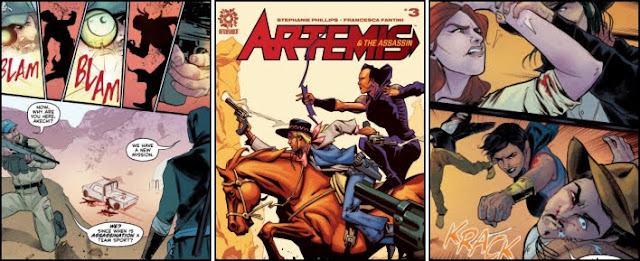 |
| BRZRKR No. 6, December 2021 |
Equally as successful in generating a strong emotional reaction from any perusing bibliophile is Keanu Reeves and Matt Kindt’s sub-plot depicting Berzerker’s badly-injured handler, Jim, needing to receive modern-day medical attention before he dies from his wounds. Bleeding from a large hole in his side, as well as literally being covered in multiple shrapnel cuts, the fever-riddled fighter’s increasingly poor health is poignantly well-penned, and at one point makes it genuinely appear as if the seasoned soldier is about to succumb to his infected lacerations just before his journey to safety up into the mountaintops can be successfully achieved; “You… You’ve seen so much conflict. Why’d you pick our side?”
Impressively, the fact that the pair’s failed assignment was in reality doomed before it even began, courtesy of Caldwell deciding to risk the veteran soldier’s life in order to elicit a “brothers in arms” moment of trusting revelation between the two blood-soaked men, never enters the mind until the rescue chopper finally lands. But once the United States' duplicity becomes clear, the sheer sense of betrayal towards those who are supposedly meant to be helping Berzerker deal with his persistent bloodlust is disconcertingly palpable.
Ron Garney also needs an enormous ‘pat on the back’ for his crucial contribution to this twenty-four page periodical. The artist produces some memorable, jaw-dropping set-pieces, such as an unarmed immortal warrior lifting up an enemy tank with his bare hands or participating in a large-scale, black powder-era fracas, which really help sell the ferocious nature of the Berzerker’s fighting prowess. However, it’s probably the penciller’s ability to slowly suggest the biting fatigue wearing Jim down during his travels through the hostile countryside which will remain longest in the mind’s eye.
 |
| Written by: Keanu Reeves & Matt Kindt, Illustrated by: Ron Garney, and Colored by: Bill Crabtree |








































